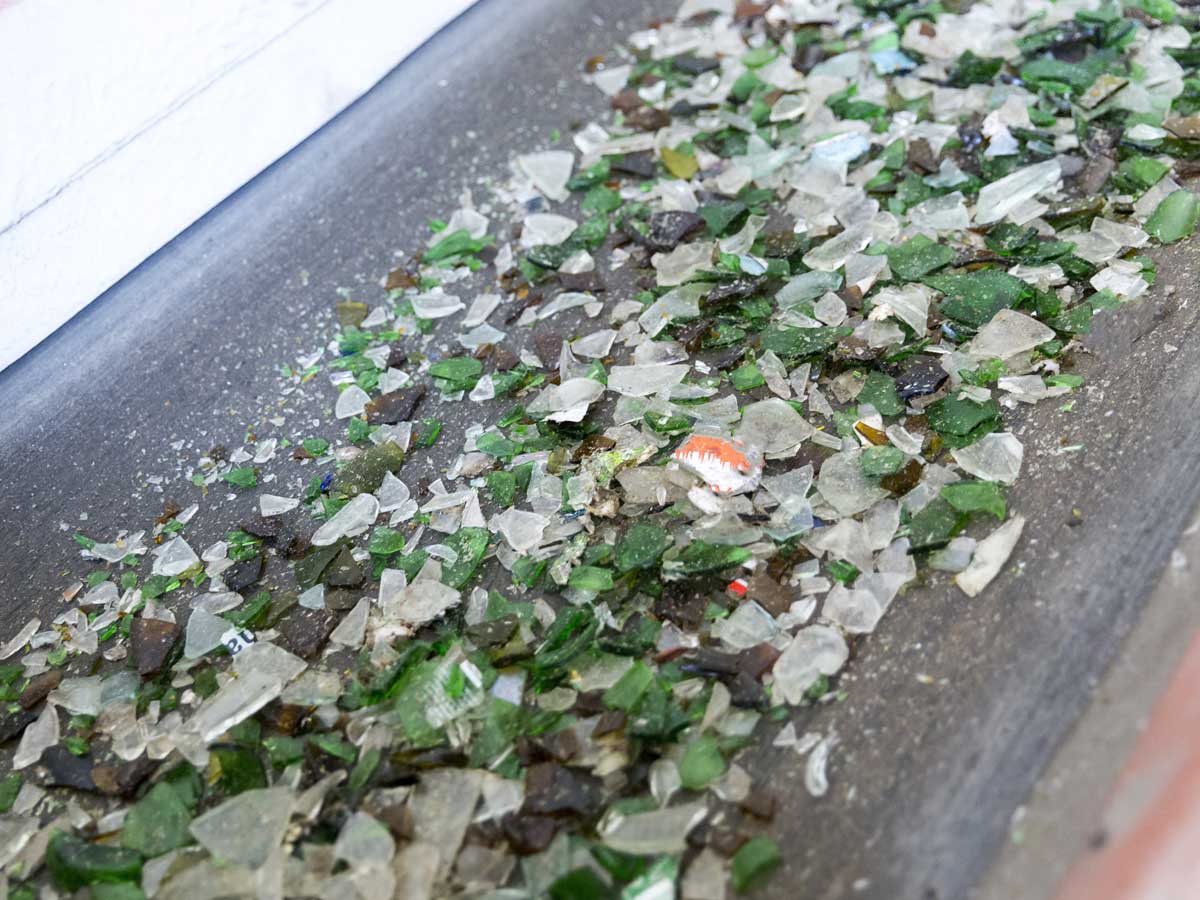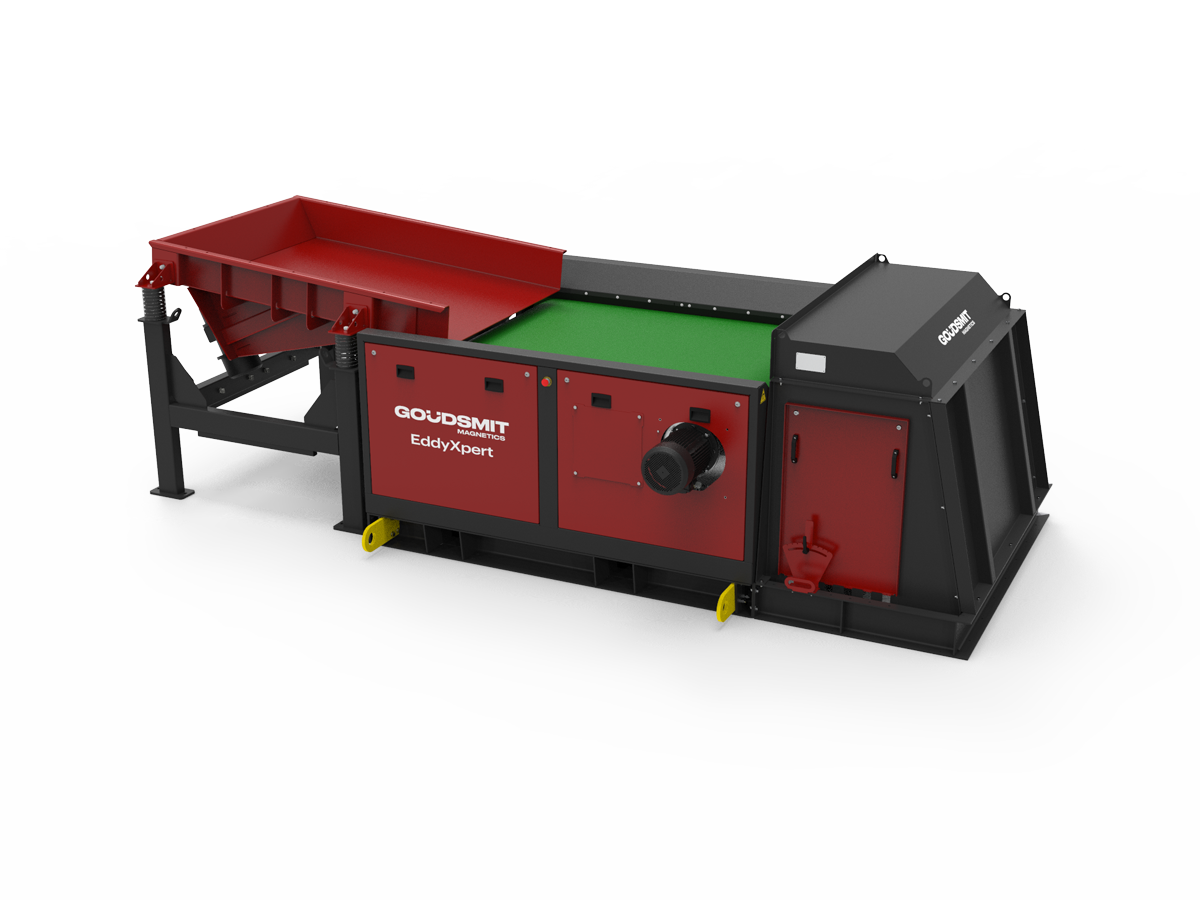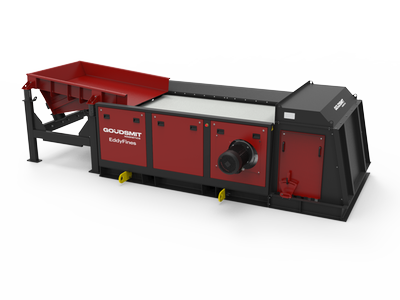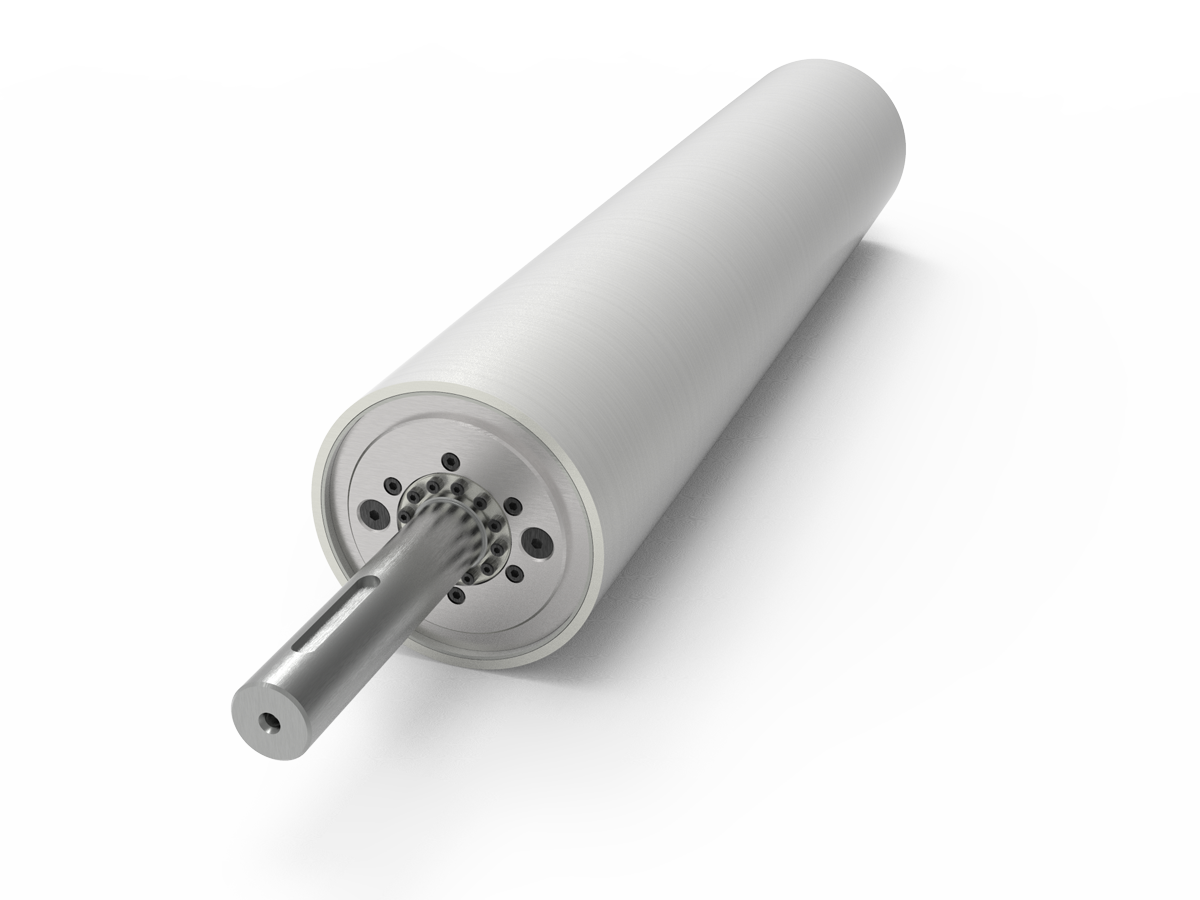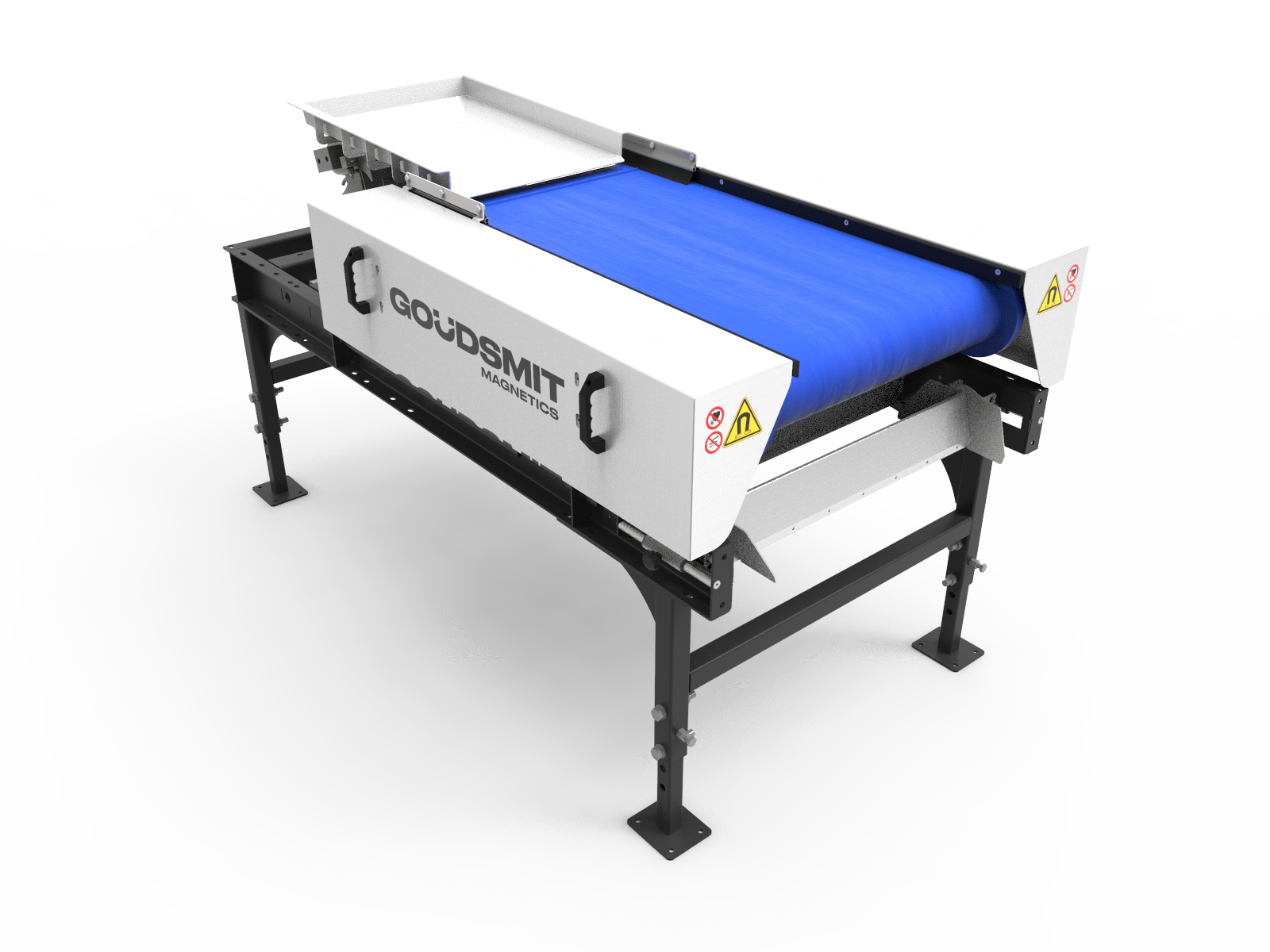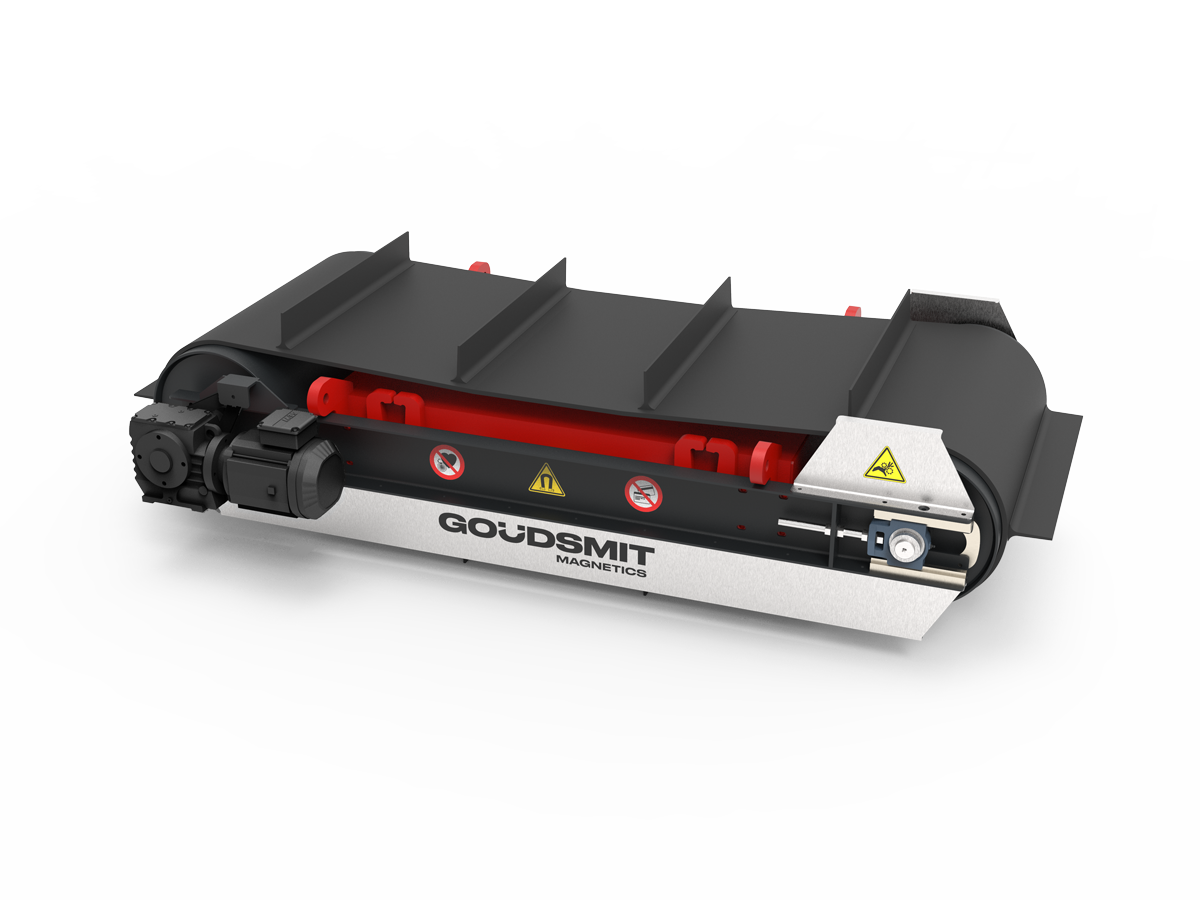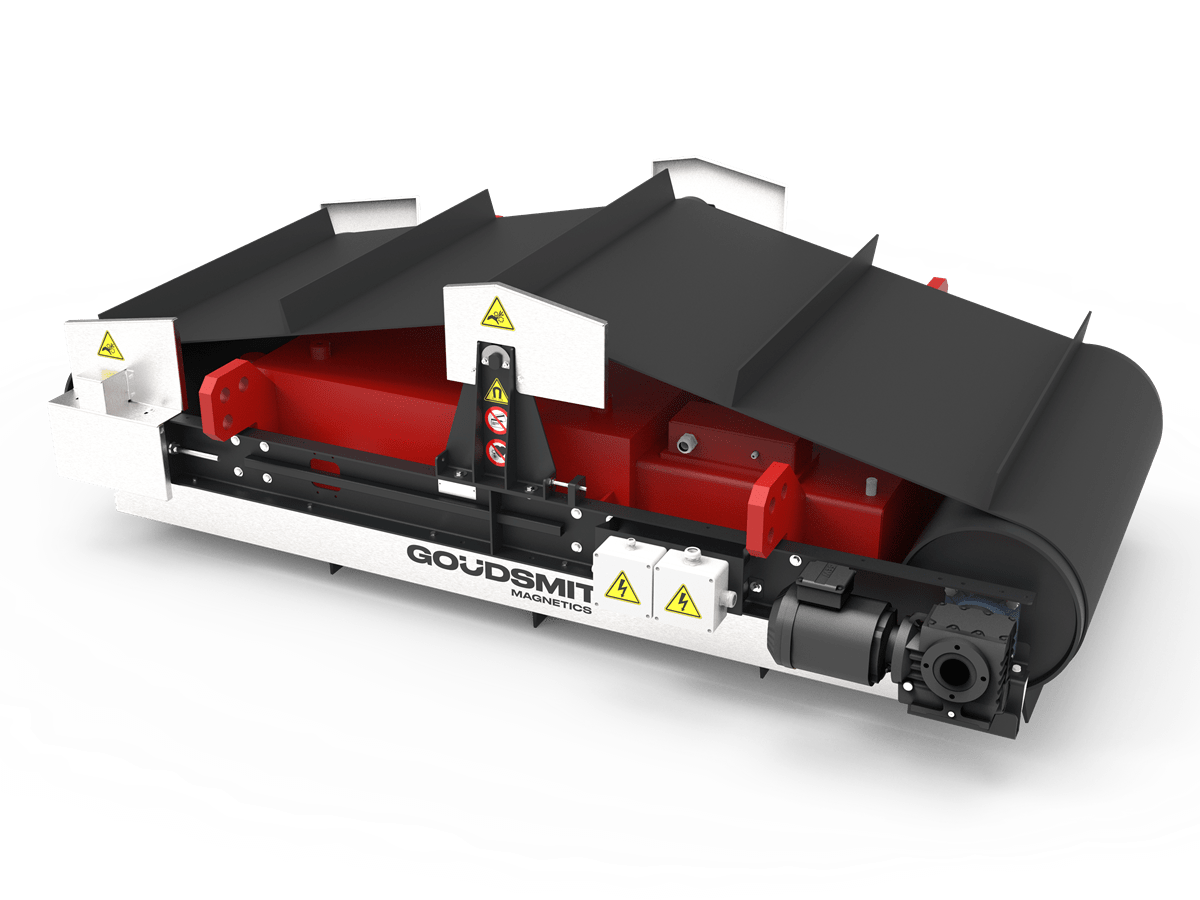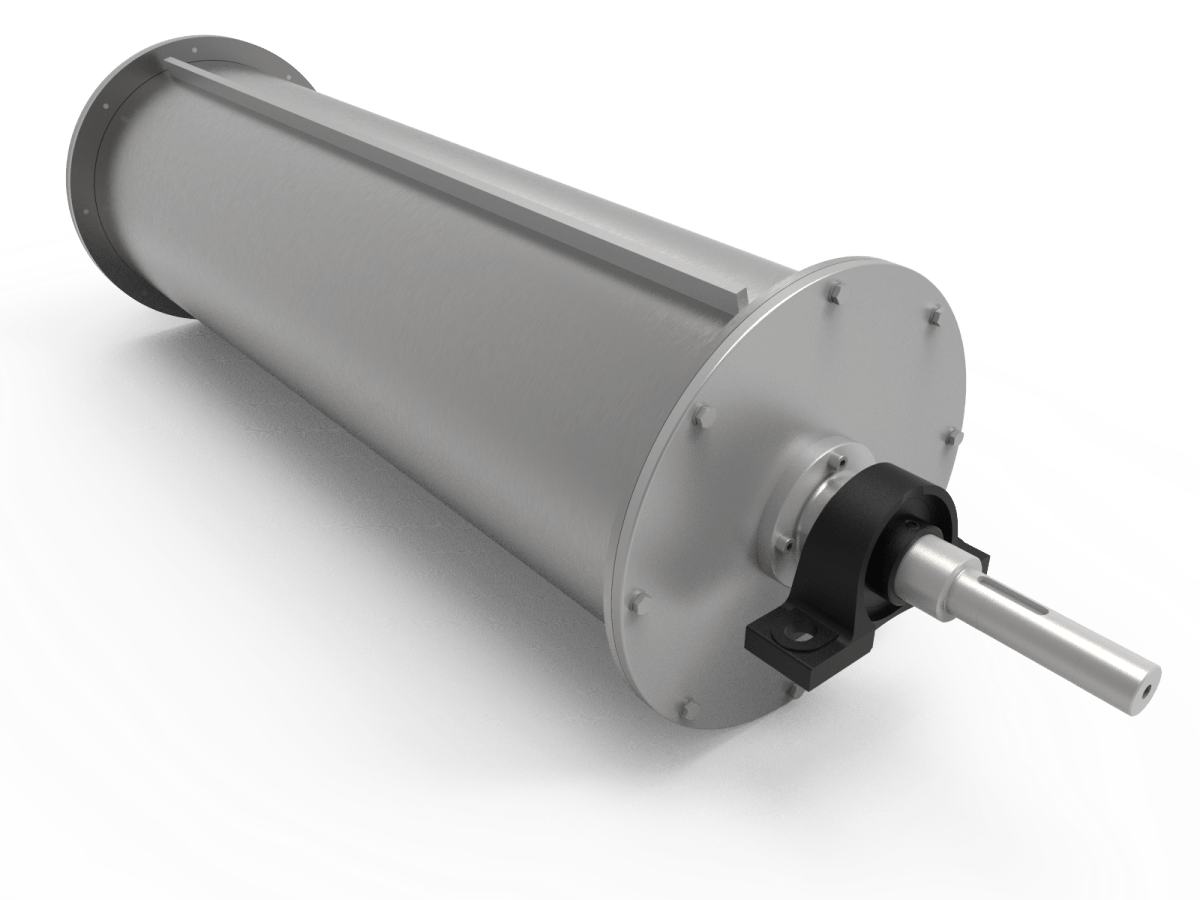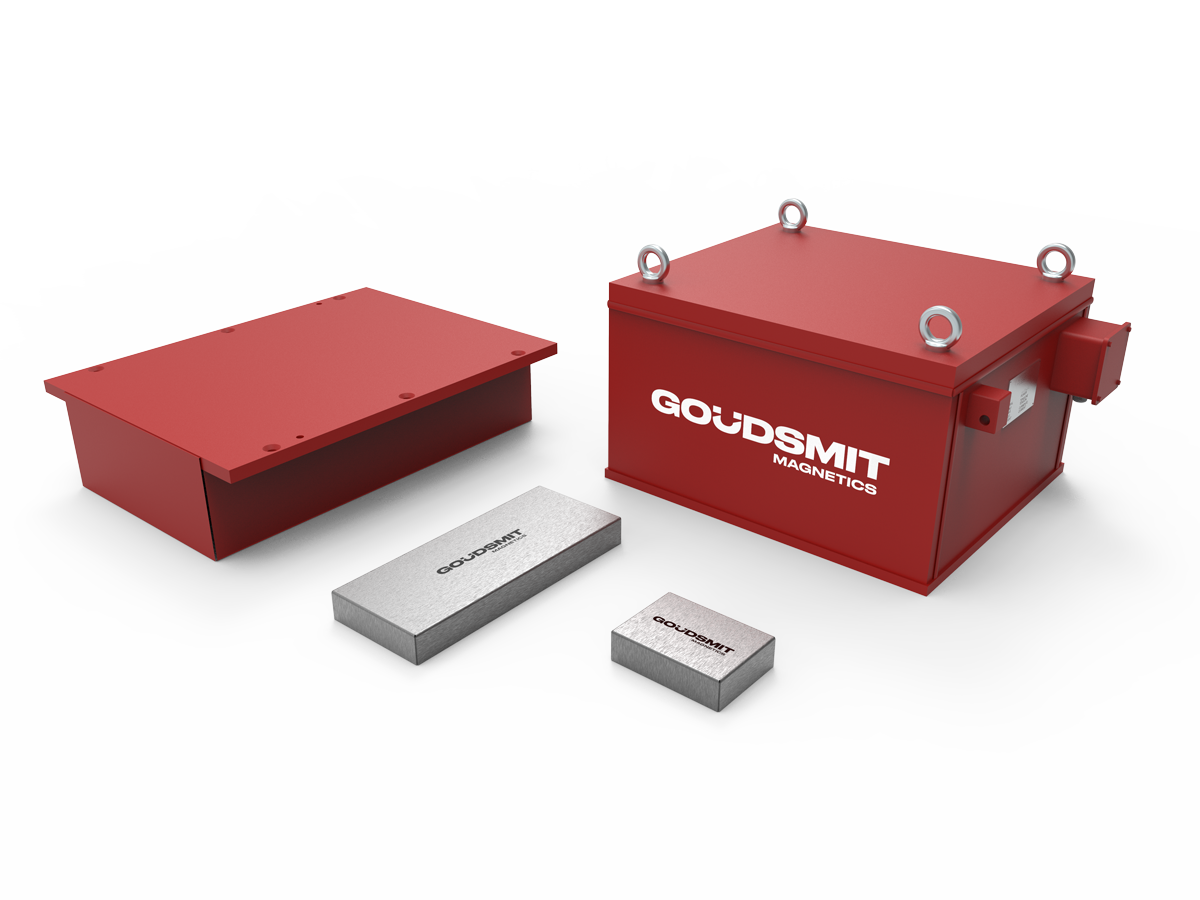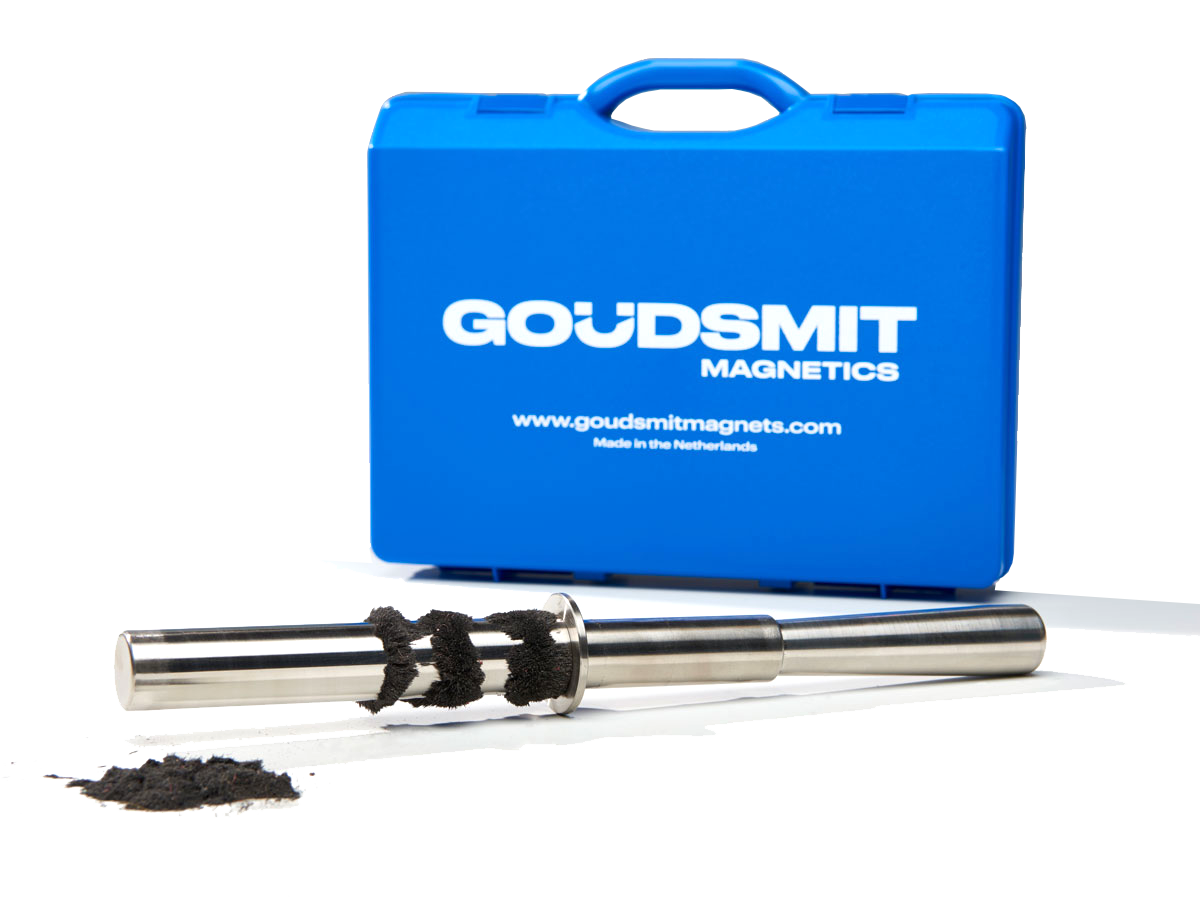Metal pollution in glass, sand and gravel
Glass exists in two main flows: flat glass and bottle glass, or packaging glass. In the processing of flat glass, there is metal pollution by aluminium (e.g., insulating glass), sensors, connectors, car window supports, wire glass steel, or by lead from stained glass panels. When processing bottle glass, metal pollution occurs due to steel crown caps, aluminium screw caps, or steel and stainless steel brackets.
Customers are placing increasingly higher demands on the quality of used glass as a secondary raw material. Therefore, recycled glass should contain virtually no ferrous or non-ferrous contamination. To obtain a pure glass fraction, as much metal as possible should be removed. With minerals such as sand and gravel, it is important to remove iron because discolouration due to rust can occur after use in building materials.
Non-ferrous metals are also not desirable. This is due to the minimum requirements for reuse, as applies to copper and aluminium, among others. With ceramic blasting media and foundry sand, pollution causes many tons of material to be sent to landfills every year. To make way for new, clean sand.
In addition to creating a pure raw material, you want as little material loss as possible during the metal separation. Current techniques such as sensor separators and metal detectors are not selective enough and separate too much valuable material. With the right separators in the right design, at the right place in the process, you can achieve an optimal result. But what do you need for that? We must take into account the abrasiveness of the material for all materials that end up in the separation system.
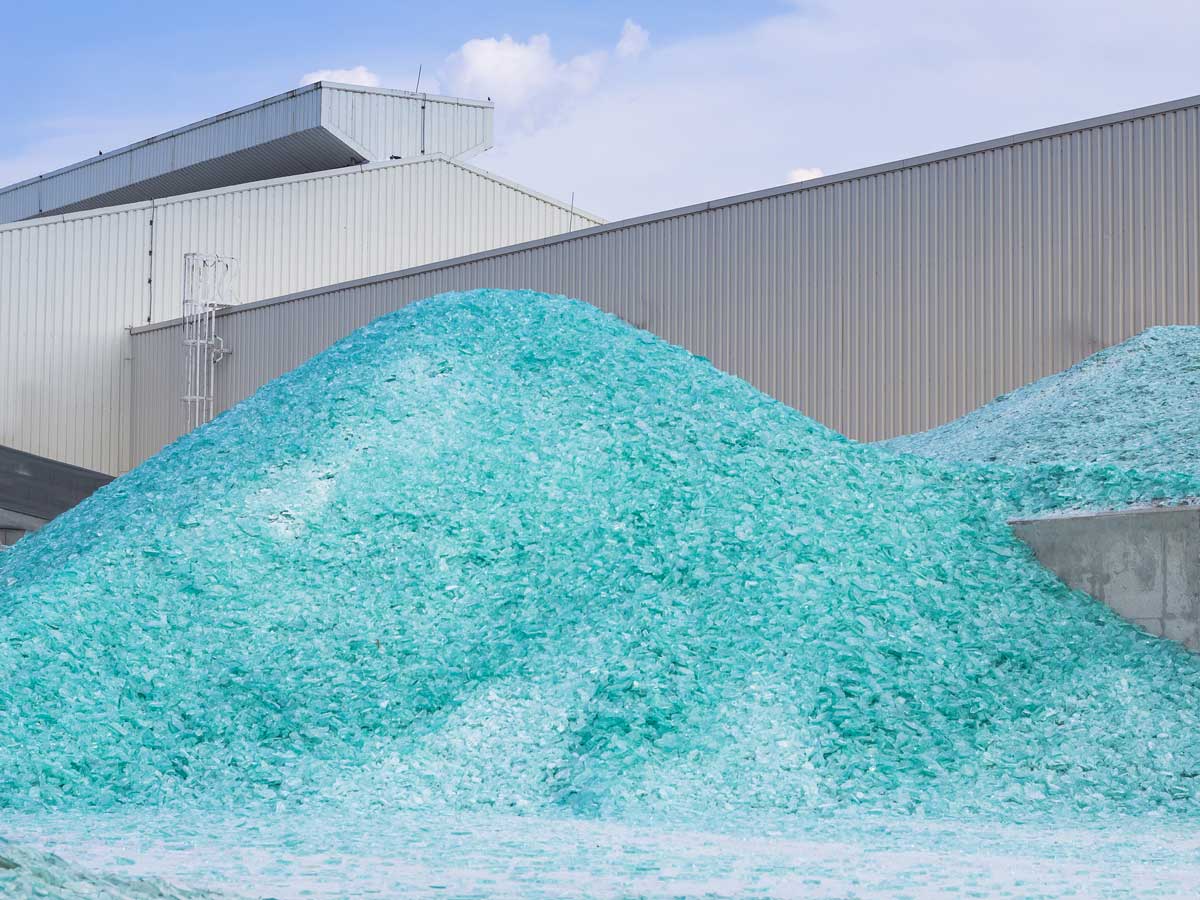
Clean sorted recycled glass cullet
Robust magnetic separators with wear-resistant replacement parts
During metal separation of glass, minerals and ceramic material, resistance of the machine to the abrasive nature of the material is important. This is the only way to achieve high uptime, combined with low maintenance costs.
We can provide the vibratory feeder in the separation system with a PU layer or a replaceable, wear-resistant manganese plate. This ensures a longer service life and budget-friendly maintenance.

Manganese wear plates for magnetic drum separator
We can supply the same for magnetic drum separators: manganese steel wear sheaths. With this option you have an easily replaceable wear shell, so you don’t have to replace the entire drum. This saves time and costs. We can also make other parts of the machines, such as chutes and separator plates, in manganese.

Manganese steel separation plate for eddy current separator
Reliable magnetic separators for separating coarse ferrous metals
Coarse and exposed ferrous metals, larger than 1 mm, can be easily separated from glass, sand or gravel with overband magnets. These machines are available with a permanent or electromagnetic field. Permanent magnets are often preferred in glass, sand and gravel processing due to their reliability and cost efficiency.
Permanent overband magnets are easy and quick to install above a conveyor belt and require little adjustment of your production line. This makes these machines perfect as a first, easy-to-implement separation step for the metal-free removal of glass, sand and gravel streams with minimal product loss.

Neodymium overband magnet for separating ferrous particles from glass
Accurate separation of small iron particles and encapsulated iron
Glass, sand and gravel flows contain many types of iron particles. They mainly differ in composition, shape and thickness. The dimensions and composition of the particles determine the type of magnetic separator. Goudsmit supplies drum magnets or magnetic head pulleys for very good deferrization of small or hard-to-separate parts, such as glass with wire.
Magnetic head pulleys are interchangeable, one-to-one, with a reversing roller in your existing line, but they can also be purchased as a complete system. For an optimal layer thickness, belt speed and capacity it is important to install sufficient working width. In this way you always obtain the correct purity. By making the belt or drum speed and the partition adjustable, you can optimally separate iron parts.
Drum magnet for separating small iron particles from glass powder
Accurately separate very small iron particles and weakly magnetic materials
Small ferrous particles - often round, and smaller than 1 mm - are difficult to separate. Just like stainless steel metals because they are only partly magnetic. Goudsmit has developed a magnetic head pulley with a very strong - high gradient - magnetic roller especially for this purpose. This magnet system is so strong that it can even remove glass, sand and gravel particles. These contain only a small encapsulated ferrous particle. We often use this system in glass, sand and gravel processing because of its wear resistance and accurate operation on fine ferrous and weakly magnetic particles.
With this machine you can also remove light ferrous interfering substances, such as organic residues that have been in the soil for a long time. Upgrading ceramic blasting media or casting sand is also possible with this technique. We can separate a lot of stainless steel and very fine ferrous particles with this. This reduces the degree of contamination to such an extent that circular use of the material becomes possible.
The effect of high gradient technology is often surprising. We can test for you in advance, so that we have certainty about the end result.
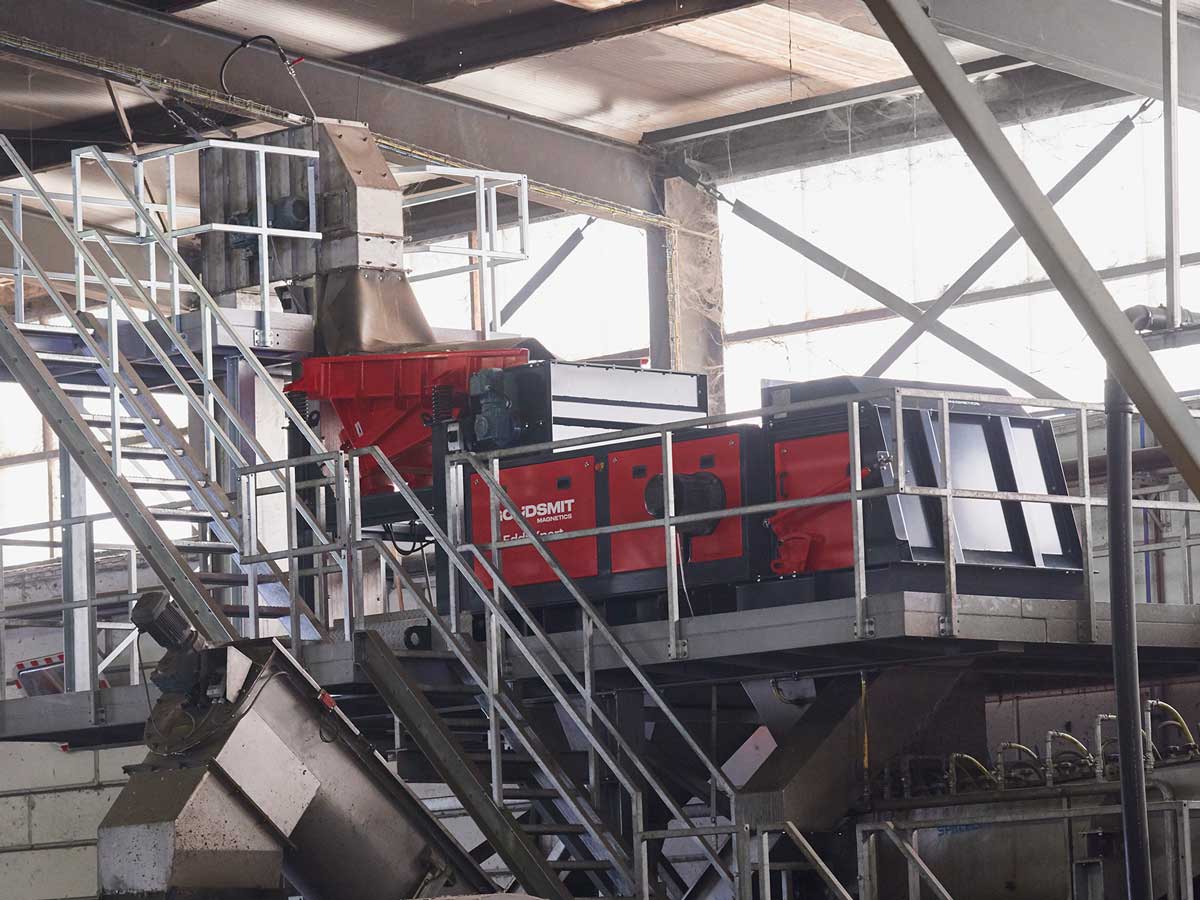
Eddy current for separating non-ferrous metals from glass
Separation of non-ferrous metals with minimal material loss
We often use non-ferrous metal separators in glass, sand and gravel recycling because they are good at selectively removing non-ferrous metals. Unlike sensor separators and metal detectors, they only separate the encapsulated and free metals. This ensures minimal material loss and the preservation of pure secondary raw material.
The eddy current technology makes it possible to separate non-ferrous metals as a metal mix from glass, sand and gravel. The metal mix consists, for example, of aluminium, copper, zinc, brass and stainless steel. It is crucial for you to remove these metals before you can use the material flow as a secondary raw material.
That is why Goudsmit has two types of eddy current systems, with special options for processing glass and sand and gravel. If it concerns material fractions of 5-20+ mm, the 22HI EddyXpert is a suitable machine. If the particles are smaller, between 0-10+ mm, the unrivalled powerful 38HI EddyFines is preferred.
The following applies to eddy current separation: The drier the material, the more easily the metals can be separated. And the finer the fractions become, the more difficult it is to remove the non-ferrous metals. The shape of glass, sand or gravel particles, and the layer thickness - i.e., the capacity - determine the purity of the end product.
With our eddy current technology, this is the best system for removing lead particles. This significantly improves the glass quality after remelting.
Removing aluminium from sand and gravel allows reuse in concrete applications and reduces the use of neutralising chemicals. Removing copper from sand and gravel, among others, is sufficient to allow the raw material to be used freely. It is also possible to upgrade ceramic blasting media, casting sand or melting salt. This technique reduces the percentage of non-ferrous particles, enabling circular use of the material.
When recycling solar panels, you can also remove metal connectors and supports using the above techniques.
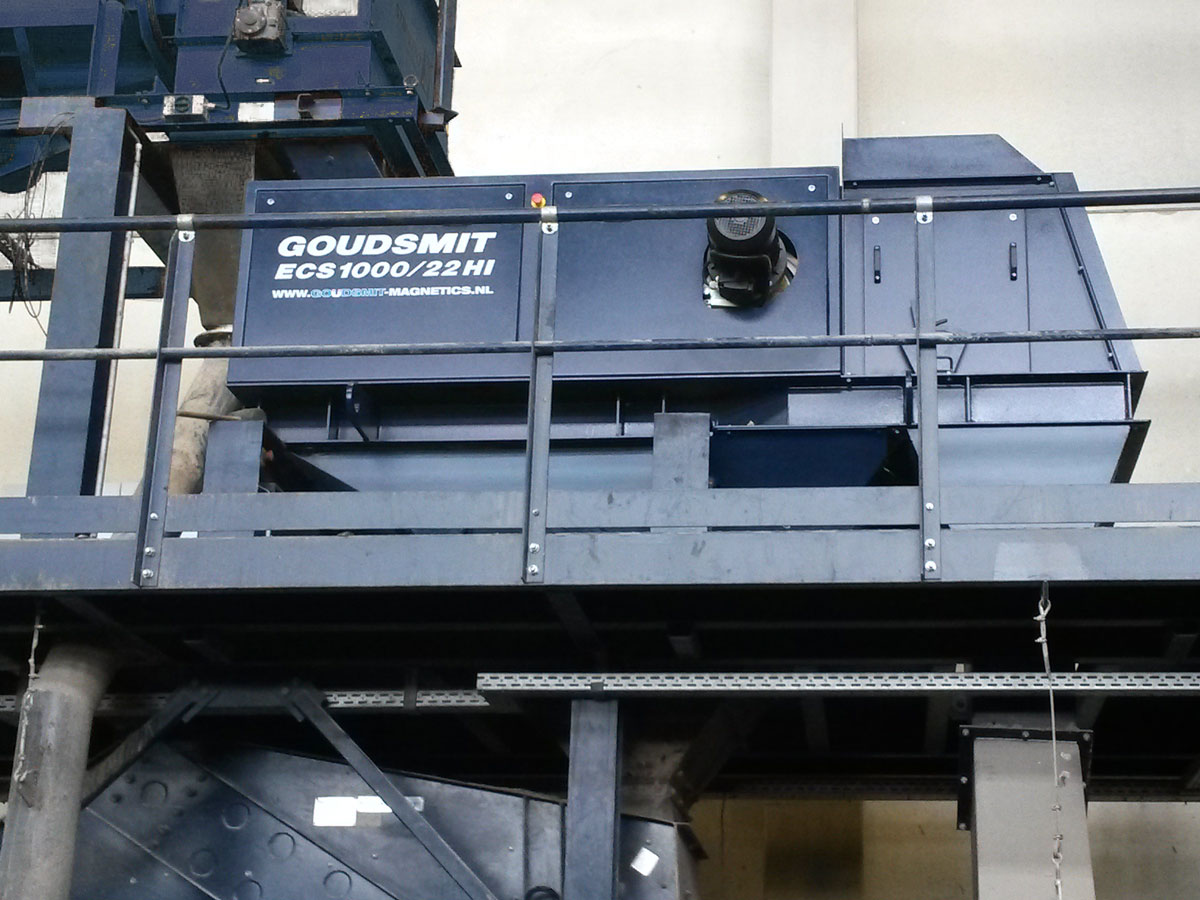
Non-ferrous metals separator for glass recycling
Custom advice: the right separator in the right place
At Goudsmit we strive for an optimal separation efficiency. This can be done by using different magnetic solutions in succession, or by combining different separation techniques. For instance, magnets in combination with metal detectors or sensor separators. If magnetic technology is not enough, we will also tell you this.
Every material flow is different, but in the end every process step results in cleaner final material. To determine the properties of your material, we would like to invite you to our extensive test centre in Waalre. Practical tests provide both you and us with quick insight into selecting the right technique. After the analysis, we give you advice so that you have the right separator in the right place, and thus achieve an optimal separation efficiency.

